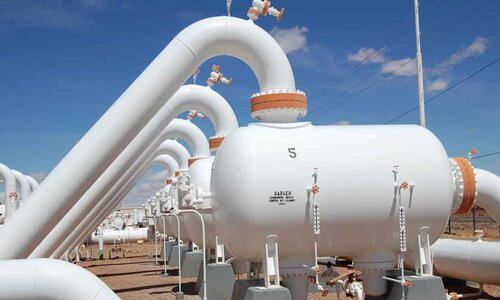Understanding Industrial Scrubbers: Functionality, Applications, and Benefits
 By
By
What are Industrial Scrubbers?
Industrial scrubbers are pollution control devices designed to remove harmful particulates and gases from industrial exhaust streams. They play a critical role in reducing air pollution and ensuring that emissions meet regulatory standards. Scrubbers come in various types and configurations, tailored to the specific requirements of different industrial processes. The functionality of industrial scrubbers can vary based on their design, but the basic principle involves the interaction between the polluted gas stream and a scrubbing medium, which can be either a liquid or a solid. Here are the primary types of industrial scrubbers and their working mechanisms: Wet Scrubbers: These scrubbers use a liquid, typically water or a chemical solution, to capture and remove pollutants. The polluted gas stream is brought into contact with the scrubbing liquid, which absorbs or reacts with the pollutants, removing them from the gas stream. Dry Scrubbers: Dry scrubbers use a solid sorbent material to remove pollutants. The gas stream passes through or over the sorbent, which captures and neutralizes the contaminants. Electrostatic Precipitators: These devices use electrical charges to remove particulates from the gas stream. The particulates are charged and then attracted to and collected on oppositely charged plates. Industrial scrubbers are utilized across various industries to control emissions and maintain air quality. Some of the key industries include: Power Generation: Used in coal-fired power plants to remove sulfur dioxide (SO2) and other pollutants from flue gases. Chemical Manufacturing: Essential for controlling emissions of hazardous chemicals and gases during production processes. Petroleum Refineries: Employed to remove hydrogen sulfide (H2S) and other contaminants from refinery gases. Metal Processing: Utilized in smelting and refining operations to capture metal particulates and other emissions. Food and Beverage Industry: Used to control odors and emissions from cooking, fermentation, and other processes. Pharmaceutical Industry: Helps in controlling emissions of volatile organic compounds (VOCs) and other pollutants. Industrial scrubbers offer several significant advantages that make them a critical component in pollution control strategies: Effective Pollution Control: Scrubbers are highly effective in removing a wide range of pollutants, including particulates, gases, and hazardous chemicals, ensuring compliance with environmental regulations. Improved Air Quality: By reducing emissions of harmful substances, scrubbers help improve air quality, benefiting both the environment and public health. Versatility: Available in various designs and configurations, scrubbers can be tailored to specific industrial processes and pollutant types. Cost-Effective: While the initial investment can be significant, scrubbers often provide long-term cost savings by preventing fines and improving operational efficiency. Enhanced Safety: By removing toxic and corrosive substances from exhaust streams, scrubbers contribute to safer working environments and reduce the risk of chemical accidents. In conclusion, industrial scrubbers are indispensable in modern industrial operations, providing an efficient and reliable means of controlling emissions and protecting the environment. Understanding their functionality, applications, and benefits can help industries optimize their pollution control strategies and contribute to a cleaner, healthier world.How Industrial Scrubbers Work
Applications of Industrial Scrubbers
Benefits of Using Industrial Scrubbers




